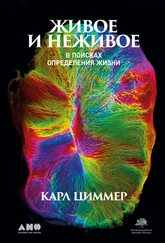Eldredge N. Time frames: The rethinking of Darwinian evolution and the theory of punctuated equilitria . London: Heinemann, 1986.
Fortey R.A. Life: A natural history of the first four billion years of life on Earth . New York: Knopf, 1998.
Ganfornina M.D., Sanchez D. “Generation of evolutionary novelty by functional shift.” Bioessays , 1999, 21: 432–439.
Gee H. Before the backbone: Views on the origin of the vertebrates . London; New York: Chapman & Hall, 1996.
____ Shaking the tree: Readings from nature in the history of life . Chicago: University of Chicago Press, 2000.
Gehring W.J. Master control genes in development and evolution: The homeobox story . New Haven, Conn.: Yale University Press, 1998.
Gerhart J., Kirschner M. Cells, embryos, and evolution: Toward a cellular and developmental understanding of phenotypic variation and evolutionary adaptability . Maiden, Mass.: Blackwell Science, 1997.
Gould S.J. Ontogeny and phytogeny . Cambridge, Mass.: Belknap Press, 1977.
____ Wonderful life: The Burgess Shale and the nature of history . New York: Norton, 1989.
Hoffman P.F., Kaufman A.J., Halverson G.P., Schrag D.P. “A neoproterozoic snowball earth.” Science , 1998, 281: 1342–1346.
Holland L.Z., Holland N.D. “Chordate origins of the vertebrate central nervous system.” Current Opinion in Neurobiology , 1999, 9: 596–602.
Keys D.N., Lewis D.L., Selegue J.E., Pearson B.J., Goodrich L.V., Johnson R.L., et al. “Recruitment of a hedgehog regulatory circuit in butterfly eyespot evolution.” Science , 1999, 283: 532–534.
Knoll A.H., Carroll S.B. “Early animal evolution: Emerging views from comparative biology and geology.” Science , 1999, 284: 2129–2137.
Lundin L.G. “Gene duplications in early metazoan evolution.” Seminars in Cellular and Developmental Biology , 1999, 10: 523–530.
McNamara K.J. Shapes of time: The evolution of growth and development . Baltimore: Johns Hopkins University Press, 1997.
O’Leary M., Uhen M. “The time of origin of whales and the role of behavioral changes in the terrestrial-aquatic transition.” Paleobiology , 1999, 25: 534–556.
Prothero D.R., Prothero D.A. Bringing fossils to life: An introduction to paleobiology . New York: McGraw-Hill, 1997.
Shankland M., Seaver E.C. “Evolution of the bilaterian body plan: What have we learned from annelids?” Proceedings of the National Academy of Sciences , 2000, 97: 4434–4437.
Shubin N., Tabin C., Carroll S. “Fossils, genes and the evolution of animal limbs.” Nature , 1997, 388: 639–648.
Sumida S.S., Martin K.L.M. Amniote origins: Completing the transition to land . San Diego: Academic Press, 1997.
Williams G.C. The pony fish’s glow: And other clues to plan and purpose in nature . New York: Basic Books, 1997.
Zimmer C. At the water’s edge: Macroevolution and the transformation of life . New York: Free Press, 1998.
____ “In search of vertebrate origins: Beyond brain and bone.” Science , 2000, 287: 1576–1579.
Глава 7: Вымирание
Bowring S.A., Erwin D.H., Isozaki Y. “The tempo of mass extinction and recovery: The end-Permian example.” Proceedings of the National Academy of Sciences , 1999, 96: 8827–8828.
Burney D.A. “Holocene lake sediments in the Maha ʻulepu caves of Kaua ʻi: Evidence for a diverse biotic assemblage from the Hawaiian lowlands and its transformation since human arrival.” Ecological Monographs , in press.
Chapin F.S.R., Zavaleta E.S., Eviner V.T., Naylor R.L., Vitousek P.M., Reynolds H.L, et al. “Consequences of changing biodiversity.” Nature , 2000, 405: 234–242.
Cohen A.N., Carlton J.T. “Accelerating invasion rate in a highly invaded estuary.” Science , 1998, 279: 555–558.
Daszak P., Cunningham A.A., Hyatt A.D. “Emerging infectious diseases of wildlife: Threats to biodiversity and human health.” Science , 2000, 287: 443–449.
Dobson A.P. Conservation and biodiversity . New York: Scientific American Library, 1996.
Drake F. Global warming: The science of climate change . New York: Oxford University Press, 2000.
Erwin D.H. “After the end: Recovery from extinction.” Science , 1998, 279: 1324–1325.
____ The great Paleozoic crisis: Life and death in the Permian . New York: Columbia University Press, 1993.
____ “Life’s downs and ups.” Nature , 2000, 404: 129–130.
Flannery T.F. The future eaters: An ecological history of the Australasian lands and people . New York: George Brazilier, 1995.
Gaston K.J. “Global patterns in biodiversity.” Nature , 2000, 405: 220–227.
Holdaway R.N., Jacomb C. “Rapid extinction of the moas (Avs: Dinornithiformes): Model, test, and implications.” Science , 2000, 287: 2250–2254.
Inouye D.W., Barr В., Armitage К.В., Inouye B.D. “Climate change is affecting altitudinal migrants and hibernating species.” Proceedings of the National Academy of Sciences , 2000, 97: 1630–1633.
Kaiser J. “Does biodiversity help fend off invaders?” Science , 2000, 288: 785–786.
Kasting J.F. “Long-term effects of fossil fuel burning.” Consequences , 1998, 4: 55–27.
Kemp T.S. Mammal-like reptiles and the origin of mammals . London & New York: Academic Press, 1982.
Kirchner J.W., Weil A. “Delayed biological recovery from extinctions throughout the fossil record.” Nature , 2000, 404: 177–179.
Kyte F. “A meteorite from the Cretaceous/Tertiary boundary”. Nature , 1998, 396: 237–239.
Lawton J.H., May R.M. Extinction rates . Oxford & New York: Oxford University Press, 1995.
MacPhee R.D.E. Extinctions in near time: Causes, contexts, and consequences . New York: Kluwer Academic/Plenum Publishers, 1999.
McCann K.S. “The diversity-stability debate.” Nature , 2000, 405: 228–233.
Miller G.H., Magee J. W., Johnson B.J., Fogel M.L., Spooner N.A., McCulloch M.T., et al. “Pleistocene extinction of Genyornis newtoni: Human impact on Australian megafauna.” Science , 1999, 283: 205–208.
Mooney H.A., Hobbs R.J., eds. Invasive species in a changing world . Washington, D.C.: Island Press, 2000.
Myers N., Mittermeier R.A., Mittermeier C.G., da Fonseca G.A., Kent J. “Biodiversity hotspots for conservation priorities.” Nature , 2000, 403: 853–858.
National Research Council (U.S.). Board on Biology. Nature and human society: The quest for a sustainable world . Washington, D.C.: National Academy Press, 2000.
Norris R.D., Firth J., Blusztajn J.S., Ravizza C. “Mass failure of the North Atlantic margin triggered by the Cretaceous-Paleogene bolide impact.” Geology, 2000, 28: 1119–1122.
Pimm S., Askins R. “Forest losses predict bird extinctions in eastern North America.” Proceedings of the National Academy of Sciences , 1995, 92: 10871-10875.
____, Raven P. “Biodiversity: Extinction by numbers.” Nature , 2000, 403: 843–845.
Powell J.L. Night comes to the Cretaceous: Dinosaur extinction and the transformation of modern geology . New York: Freeman, 1998.
Prothero D.R., Prothero D.A. Bringing fossils to life: An introduction to paleobiology . New York: McGraw-Hill, 1997.
Purvis A., Hector A. “Getting the measure of biodiversity.” Nature , 2000, 405: 212–219.
Quammen D. “Planet of weeds.” Harper’s , 1990, 297: 57–69.
Читать дальше
Конец ознакомительного отрывка
Купить книгу
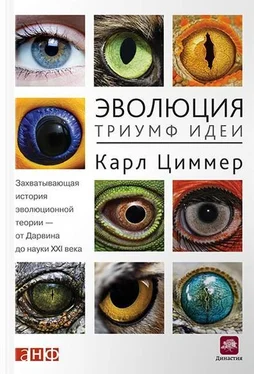
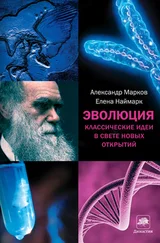


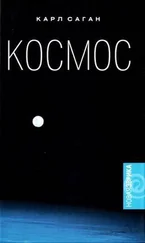
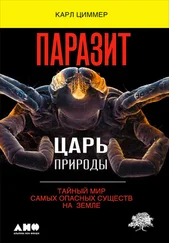
![Карл Циммер - Паразит – царь природы [Тайный мир самых опасных существ на Земле] [litres]](/books/396828/karl-cimmer-parazit-car-prirody-tajnyj-mir-sam-thumb.webp)
![Карл Циммер - Она смеется, как мать [Могущество и причуды наследственности] [litres]](/books/406077/karl-cimmer-ona-smeetsya-kak-mat-moguchestvo-i-pr-thumb.webp)
